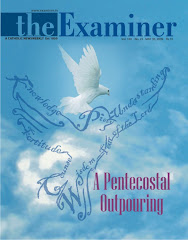The feast of the Annunciation is one of the most important feasts in the Church calendar. The word Annunciation, means announcing. St. Luke's gospel celebrates the angel Gabriel's appearance to the Virgin Mary (St. Luke 1:26-38), the announcement that the Blessed Virgin had been chosen to be the Mother of Our Lord and Mary's fiat which is her willing acceptance of God's Holy plan. The angel’s greeting, "Hail Mary, full of grace, the Lord is with you" has echoed down through the ages in the most common prayer, "Hail Mary." The response of the Blessed Virgin Mary is called fiat, which is a Latin word meaning "let it be done”. Mary by pronouncing her "fiat" at the Annunciation and giving her consent to the Incarnation was already collaborating with the whole work her Son was to accomplish.
The feast of the Annunciation is on March 25th which is nine months before Jesus' birth at Christmas. The origin of the Feast of the Annunciation of the Lord dates back to at least the 6th century, and is mentioned between AD 530 and 533 in a sermon by Abraham of Ephesus. The tenth Synod of Toledo (AD 656) and Trullan Synod (AD 692) speak of the Annunciation feast as universally celebrated in the Catholic Church. The Apostle's Creed which we recite every Sunday during Holy Mass, affirms that Jesus was "conceived by the power of the Holy Spirit." It is a practice that during the Profession of Faith, all bow or genuflect at the words “and was made man.” Mary's response to the angel, "Behold, I am the handmaid of the Lord; let it be done to me according to your word," is a statement of humble faith, and a model for us on how we are to respond when God calls us to do what seems impossible.
Article published in 'The Examiner', 21st March 2009 (Vol 160, No 12)

.jpg)
No comments:
Post a Comment